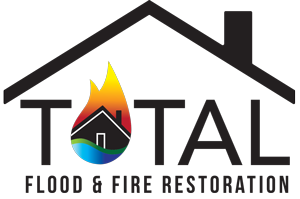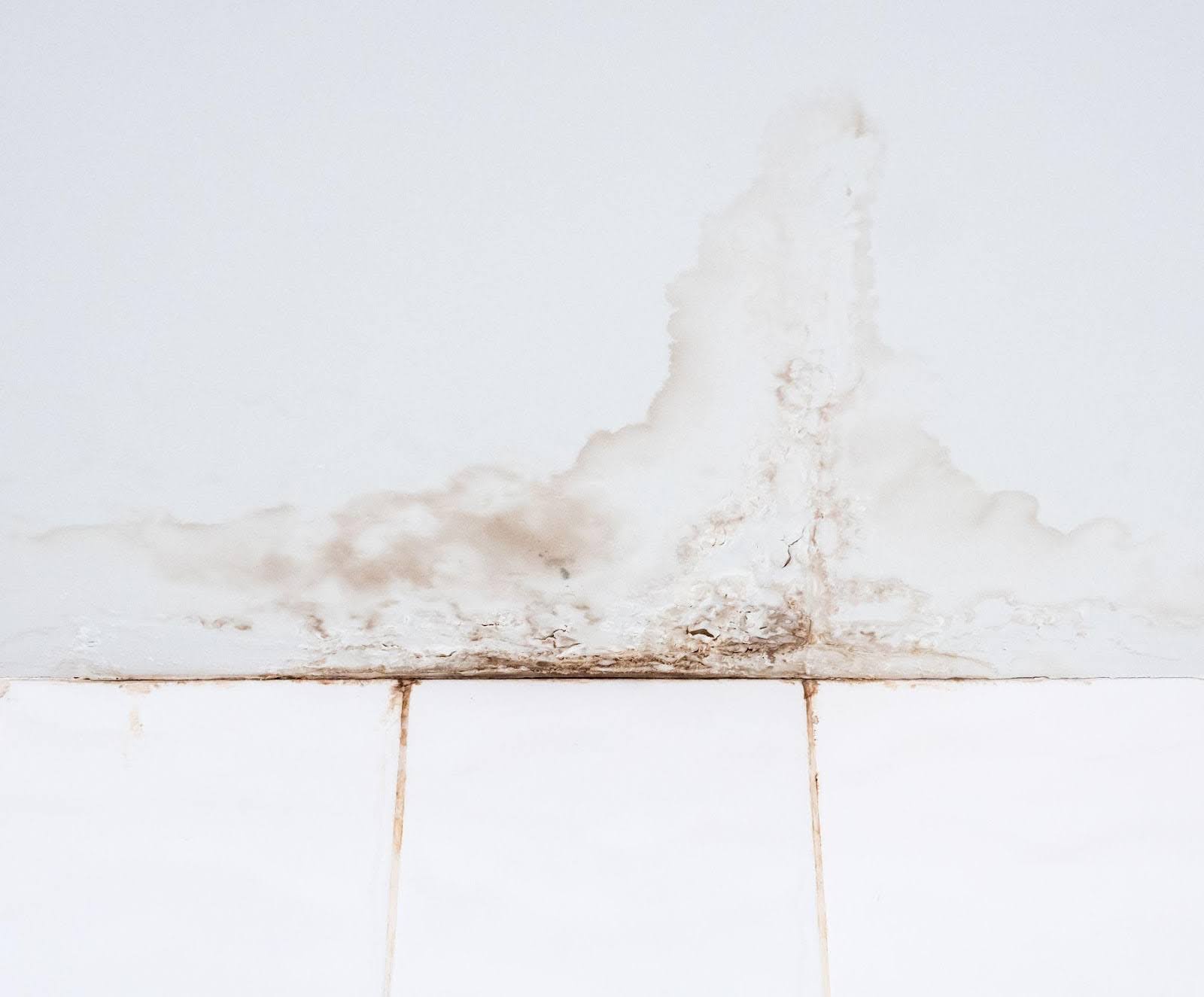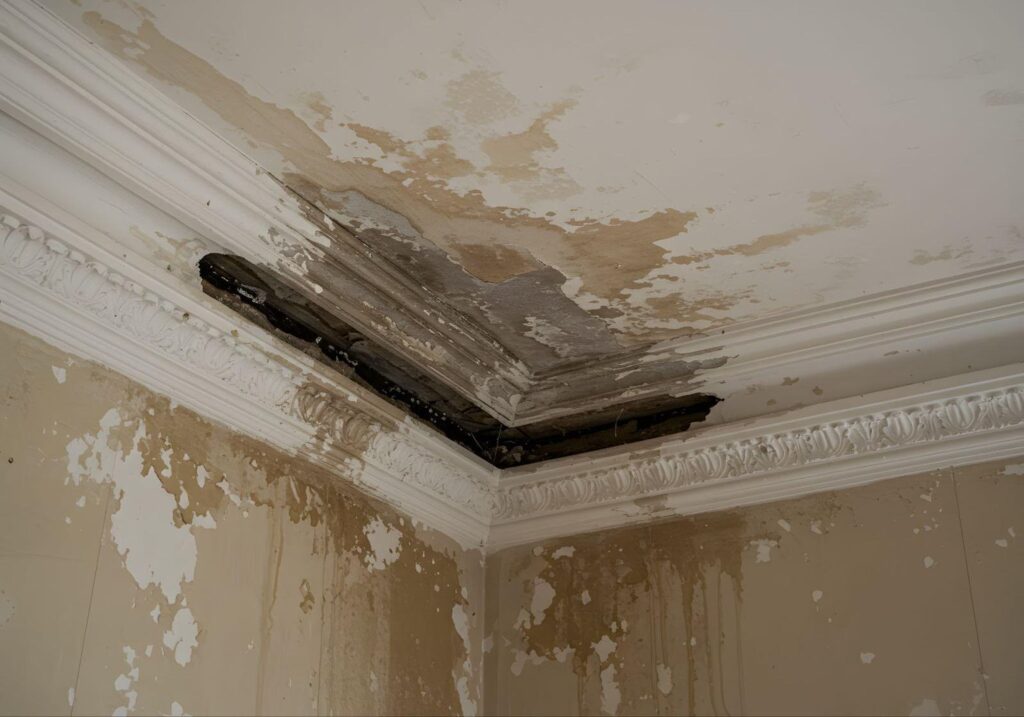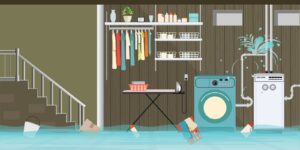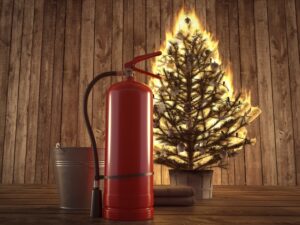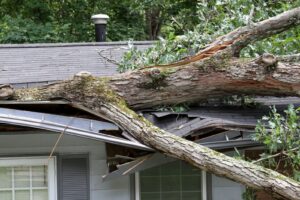Water damage often hides in plain sight. It begins small with a faint ceiling stain, a soft spot underfoot, or a musty smell that lingers in the air. If ignored, these subtle warnings lead to costly repairs, structural deterioration, and mold growth that puts your health and home at risk.
This guide outlines the early signs of water damage, highlights high-risk areas to inspect, and explains how to fix issues before they escalate. Whether you’re dealing with a slow leak or working to prevent future problems, these tips will help you stay prepared and in control.
Common causes of water damage
Understanding what causes water damage helps you stop problems before they escalate. Moisture often creeps in from several sources, each capable of weakening your home’s structure and endangering your health.
Leaky roofs, windows, and skylights
Rainwater slips through damaged shingles, cracked flashing, or poorly sealed windows. These leaks often go unnoticed in attics or behind walls, where they slowly rot wood, stain ceilings, and create ideal conditions for mold.
Faulty or aging plumbing systems
Old or worn pipes, loose fittings, and deteriorating seals leak water inside walls or under floors. Even a slow drip leads to warped materials, hidden mold, and expensive long-term repairs when ignored.
Appliance failures
Washing machines, dishwashers, and water heaters often fail without warning. Burst hoses, cracked tanks, or loose connections release water into surrounding areas, soaking flooring and creating persistent dampness that invites rot.
Poor drainage and foundation issues
Water often finds its way into your basement due to clogged gutters, improper downspout placement, or negative grading. When runoff pools near your home, it seeps through cracks or gaps in the foundation.
Weather-related events
Storms, snowmelt, and flash flooding overwhelm your home’s defenses. Without proper waterproofing, water pushes through siding, windows, and basement walls, causing widespread damage inside and out.
Identifying these causes early helps you stop leaks before they spiral into disasters. Routine inspections, smart upgrades, and proactive repairs protect your home and save money in the long run.
Early signs of water damage
Water damage often spreads quietly, showing subtle signs before creating major problems. Identifying these red flags early helps you act quickly and avoid extensive repairs.
Discoloration or stains on ceilings and walls
Yellow, brown, or rust-colored spots often signal water intrusion from a roof leak, condensation, or a hidden plumbing issue. These stains typically grow larger over time, indicating continuous exposure to moisture.
Warping or buckling floors
Moisture in the subfloor expands and distorts wood and laminate. Warped or spongy spots, especially near appliances or bathrooms, suggest an ongoing leak beneath the surface.
Musty odors and visible mold growth
A persistent earthy smell usually points to hidden mold colonies. Mold thrives in damp, dark areas and can grow behind walls or under carpets before becoming visible as black, green, or gray patches.
Peeling paint or wallpaper
Trapped moisture loosens adhesives and weakens finishes. Look for bubbling, blistering, or flaking paint and curling wallpaper edges, especially in bathrooms, basements, or kitchens.
Sounds of dripping or rushing water behind walls
Unexplained dripping or flowing noises often signal a leaking pipe or broken connection. Even if you don’t see water, hearing it suggests something requires urgent attention.
Recognizing these early symptoms gives you a valuable head start. By acting quickly, you protect your home, save money, and prevent health hazards linked to prolonged moisture exposure.
Areas to inspect regularly
Staying ahead of water damage means knowing where trouble often starts. Routine inspections help you spot warning signs before they escalate into costly repairs. Focus your attention on these vulnerable spots throughout your home.
Under sinks and around toilets
Cabinets and flooring near plumbing fixtures often hide slow leaks. Check for water stains, warped wood, mold, or a persistent musty smell. Feel around pipes and seals for dampness, and tighten any loose fittings.
Behind appliances
Washing machines, refrigerators with ice makers, and water heaters often leak unnoticed. Pull these appliances away from the wall and inspect hoses, valves, and floors. Look for puddles, rust, or discoloration. Replace aging hoses and check connections at least once a year.
Attics and crawl spaces
These tucked-away areas easily collect moisture without detection. Inspect the underside of the roof for wet spots, dark stains, or sagging insulation. In crawl spaces, check for standing water, mold patches, or condensation on pipes and walls.
Basements and foundation walls
Basements frequently reveal the first signs of exterior moisture problems. Scan walls and floors for cracks, damp streaks, peeling paint, or salt-like efflorescence. Run your hand along the base of the foundation to detect any lingering moisture.
Roof and gutter systems
A damaged roof allows water to seep in slowly over time. Look for missing shingles, lifted flashing, or debris buildup. Clear your gutters and downspouts regularly to keep water flowing away from your home. Check for any signs of overflow or leakage along the roofline.
By inspecting these key areas regularly, you stay in control of your home’s moisture levels. Early detection preserves your structure, keeps your indoor air healthy, and saves you thousands in future repairs.
Tools to help detect water damage
Early detection protects your home from structural damage and mold. The right tools make it easier to catch moisture problems before they escalate.
Moisture meters and infrared cameras
Use moisture meters to measure water levels in drywall, wood, or flooring. These tools reveal hidden leaks behind walls or under surfaces. Infrared cameras detect temperature changes that often signal trapped moisture in hard-to-see areas.
Leak detectors and smart water sensors
Place leak detectors near sinks, toilets, and appliances to catch slow drips. Smart sensors send alerts to your phone when they detect moisture. Some models shut off the water automatically to prevent flooding.
Humidity gauges for enclosed spaces
Track humidity in basements, attics, and crawl spaces with a digital hygrometer. Keeping levels between 30% and 50% helps prevent mold and moisture damage.
How to fix minor water damage
Catching water damage early gives you the best chance to fix it before it spreads. Minor issues require swift action and careful cleanup to stop mold, protect structural materials, and avoid expensive repairs later on.
Drying out affected areas with fans and dehumidifiers
Start by removing excess moisture. Use high-powered fans to increase airflow and point them toward damp areas like wet walls, floors, or ceilings. Place a dehumidifier nearby to pull moisture out of the air and reduce the risk of mold. Let the equipment run continuously until everything feels completely dry to the touch.
Removing damaged drywall or insulation
If water has soaked into drywall or insulation, cut out the affected sections. Even a small amount of retained moisture can weaken the material and encourage mold growth. Wear gloves and a mask during removal, and dispose of all damp debris in sealed bags to avoid spreading contaminants throughout your home.
Applying mold inhibitors or antimicrobial treatments
After drying and cleaning the area, apply a mold inhibitor or antimicrobial spray to prevent future growth. Focus on exposed studs, subfloors, and other porous surfaces. Let the treatment dry fully before sealing the space or replacing any removed materials.
Resealing caulking around tubs, sinks, and windows
Water often sneaks in through failed seals. Check the caulking around plumbing fixtures and window frames. Remove cracked or loose material and apply a fresh bead of waterproof sealant. This quick step blocks moisture from seeping into hidden spaces and reinforces your home’s defenses.
Addressing small water issues right away keeps them from turning into large-scale damage. With a proactive mindset and the right approach, you protect your home, your health, and your peace of mind.
When to call a professional
Some water damage situations demand expert attention. While small issues may stay manageable with DIY cleanup, others require the skill, tools, and training that only certified professionals offer. Knowing when to bring in help protects your home and prevents costly mistakes.
Widespread or recurring damage
If water affects large areas or keeps returning despite repairs, reach out to a professional. Hidden moisture often lingers behind walls, under floors, or inside ceilings. A restoration team uses advanced tools to detect and remove water that standard cleanup methods overlook. Professionals also trace the source of the problem and provide long-term solutions.
Suspected mold or structural issues
Mold spreads fast and thrives in damp, enclosed spaces. If you smell musty odors, see discoloration, or feel soft spots in walls or floors, call a specialist. Trained experts contain and eliminate mold while protecting indoor air quality. Structural problems, such as sagging drywall or warped wood, also require expert evaluation to prevent collapse or further deterioration.
Damage involving electrical systems or contaminated water
Avoid handling water-damaged electrical components. Moisture inside outlets, wiring, or fuse boxes presents serious fire and shock hazards. Likewise, water from sewage backups, flooding, or appliance malfunctions may contain harmful bacteria and toxins. Restoration professionals follow strict safety procedures to clean, sanitize, and repair these areas correctly.
Protect your home from water damage with Total Flood and Fire Restoration
Total Flood and Fire Restoration delivers fast, reliable service for every stage of water damage recovery. Our certified team responds quickly to assess the situation, stop further damage, and restore your home with expert care.
When leaks, floods, or hidden moisture threaten your space, rely on us to bring it back to life safely, thoroughly, and professionally. Contact Total Flood and Fire Restoration today!
